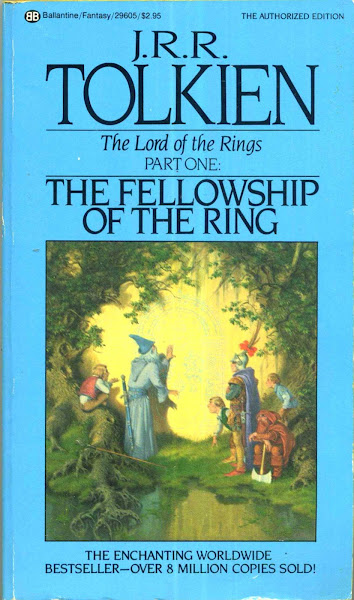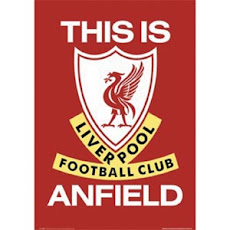Bashir
Ahmad’s Hurt Locker
by rick olivares
In
military parlance, a “hurt locker” is that area where an explosive device is
set off and one where no one wants to be at the time of its detonation. For
Bashir Ahmad who served a tour of duty in Iraq with the US Army as a combat
medic assigned to an Explosive Ordnance Disposal (EOD) Team – I am sure you’ve
seen that Jeremy Renner film, “The Hurt Locker” that tells the story of one
such team – that term has now come to mean the cage where mixed martial arts
fighter engage in combat.
The
30-year old Ahmad has made that transition from soldier to a fighter. It’s an
irony of sorts that leads the Pakistani-American to grin and reflect on his
current occupation.
He
joined the military as a medic during his more carefree days because it was
“the one job that was the complete opposite of what war is which is death and
destruction.” The 5’7” Ahmad remembered watching war films and the medics were
always the characters that cared and he began to look up to them.
Shared
Ahmad of his time in the Army: “When I joined up, the only thing I wanted to be
was a medic. When I was deployed I was happy to be in that role because I did
not agree with the US invasion of Iraq. But the fact that I was a medic and my
job was to save lives, made me at ease with the situation. Along with treating
US soldiers, I also treated Iraqi civilians who did not have regular care to
medical facilities and it was a very heart warming experience.”
Amidst
the death and destruction, Ahmad looked for anything positive out of the
situation. “I was a medic on an EOD team. For those who have seen the movie the
"The Hurt Locker" that's EOD. We went out and destroyed explosives. The
EOD team was composed of two to three people with about a dozen or so others who
would stand guard. I would just stand nearby and sometimes talk with locals.
One time we were called out and these kids that were nearby started playing
with me then BOOM! Something went off and these children ran away. Although they
were safe, they were so frightened and that was when I realized how tragic war
is when it affects someone that way. Those children will never be the same for
having to spend their childhood in those circumstances. It was a just a simple
look of fear but it symbolized to me the tragedy of war.”
While
war can also be destructive on a soldier’s psyche, Ahmad purged himself of
Iraq’s demons. From his gym in Lahore, Pakistan, he didn’t hesitate to share
his feelings about the conflict. “I have seen injuries on people that would not
leave my mind for until well over a year after I returned from my tour of duty.
Certain things and even food I ate would remind me of them, and it would scare
me that maybe it would never fully leave my mind but they eventually did. Although
I can remember them if I wish, it taught me a lesson that what damages a person
can also sustain and keep them alive.”
Rather
than let the experience consume him as it does to some other combat veterans,
Ahmad chose to look at it from a different perspective. He graduated from
George Mason University with full honors. “I can say it had a positive impact
on who I am. I came away from the experience understanding that war is
essentially the suffering of normal people who want to have a normal life
between two parties. The soldiers and insurgents know what they are getting
into and they agreed to it, but those who suffer the most wish to have no part
of it. It's an extremely unfair and tragic situation.”
After
graduation, he took up Mixed Martial Arts because he liked the discipline it
taught. Once he learned how good it can be for him, Ahmad moved back to
Pakistan, the country of his homeland, to open a gym and teach his countrymen
the world’s fastest growing sport.
“I
am now based out of Lahore,” added Bashir. “My home gym is there although quite
frankly as things get bigger I realize that maybe I do not belong to a specific
gym. I feel like I am part of all the MMA gyms in the country. PAKMMA (Pakistan
Mixed Martial Arts) is doing great and right now it is going through a bit of a
metamorphosis, the results of which we shall see in the next year or two.
Before we were just a website and fan page but now the time has come to grow
with the changing MMA scene. People are taking up MMA in Pakistan steadily
although it has not exploded in the way it has in Southeast Asia, but with time
that will happen here too. Kids are not taking up the sport as it is still seen
as something for grown ups, similar to the USA. In the USA only recently is it
seen as appropriate for kids to do MMA and even then it is not all that common.”
Ahmad
won his first MMA fight against compatriot Mohammad Arshad with a rear naked
choke in Pak Fight Club at Punjab Stadium in April 14, 2012. It would take
almost a year later before he fought his second professional fight and that was
during his One Fighting Championship debut at Kings and Champions at the
Singapore Indoor Stadium against unbeaten Thai Muay Thai practitioner Shannon
Wiratchai.
“I
am going to be the first person to defeat Wiratchai,” proclaimed Ahmad. For
that fight, he lived and trained in a mosque in Singapore and jokingly referred
to himself as a “fighting monk.”
However
once inside the cage against Wiratchai, it didn’t look good for Ahmad early on.
Referee Senichi Serizawa stopped the fight early in the first round when the
Thai cut the area above Ahmad’s eye with a vicious elbow. When the fight
resumed, a fired up Ahmad who was able to gain his bearing during the brief
stoppage, immediately nailed Wiratchai with a right.
The
Thai responded by taking the leg from underneath the Pakistani-American for a
second takedown. Wiratchai tried to open up the cut but Ahmad reversed the
takedown and pinned him to the fence where he teed off on him. The round ended
with the Thai on his back as he was literally saved by the bell.
Ahmad
opened the second round with a stinging left. He took down Wiratchai and
punished him with some shots before the referee instructed Ahmad to break the
clinch that after a while wasn’t going anywhere.
Wiratchai
goaded Ahmad to give him something drawing a roar from the crowd. The two would
trade shots over the course of the next two rounds but Ahmad proved to land the
more telling blows for a unanimous decision win.
My interview with Bashir Ahmad after his fight with Shannon Wiratchai
“The
One FC medical staff did a great job of stitching me up after that fight,”
recounted Ahmad of that bout where Wiratchai made a bloody mess of his face. “I
look fine, you can hardly see the scars. I have learned a lot from that fight
and I am glad that it went 15 minutes as it gave me plenty of time in the cage
and I think that's very important since I am relatively in experienced in terms
of amateur and pro fights. That was my first fight against a legitimate
opponent. Shannon had three pro fights and six on a much more competitive
(compared to Pakistan) Thai MMA scene. So I was glad I got to spend that time
in the cage, and feel confident about my conditioning and feel comfortable.
This next fight against (Brazilian No-gi fighter) Bruno Pucci, you are going to
see a much much better Bashir Ahmad."
“I expect Pucci to be a well-rounded fighter and he can expect the same
for me. That being said, he is very good on the ground and this is a very
interesting situation for me. So for that I have been training with Abu Dhabi Combat
Club medalist (and fellow Virginia native) Ryan Hall. He (Hall) is Pucci's size
and is a very, very decorated grappler. So, I am going to be coming to the cage
very confident of my abilities. I will be prepared for this match. I will have
sharpened all my weapons for war. I will have done all I good to come prepared
for that night. God will decide the rest.
With
the bout against Pucci a few weeks away, Ahmad, now considered the father of MMA in Pakistan, had time to reflect on
everything that has happened including the irony of his chosen path of a
warrior who thought that he had seen enough combat. “Being a MMA fighter and
being a soldier have many similarities. The biggest is that both require you to
endure periods of discomfort and learn that it's not that bad and your body
will handle it. You realize that discomfort is all in your mind and that it
will never last forever. It always eventually passes. Both require discipline,
waking up early and very monotonous routines. The warrior lifestyle is the same
no matter where it takes place.”
On the next Pakistani MMA
prospect:
Bashir
Ahmad: “Afnan Iftikhar is one of the guys on the scene that you will be seeing
more of in the future. He is one of the pioneer fighters of the sport in
Pakistan. He is well rounded and has a great understanding of the game. He also
helped prepare me for my first One FC fight and was in my corner. So not only
is he a good fighter, but he's a good coach.
People
never really take the time to think about who trained me for my One FC debut in
Pakistan and the general consensus is that I train alone, but everyone knows
that that is impossible. Afnan was my coach and my sparring partner for that
fight, and as you see it paid off. He's going to the first Main Event at the
first show of our new league, PAKMMA Fighting Alliance. It's an amateur league
that has one professional main event bout on each card and he will be the first
person to honor that slot. Get ready to see more of this guy on the
international scene as well. he is also another fighter that has the potential
to get to ONE FC.
On military vets who went on to
athletic careers:
Former
military men who have gone to athletic careers are nothing new. The world has
seen it happen most particularly after World War II when many servicemen went
back to playing professional sports.
In
American baseball, there were Boston’s Ted Williams, New York’s Yogi Berra, and
the Brooklyn Dodgers’ Jackie Williams to name a very few.
In
boxing, there’s Ken Norton Sr. and Leon Spinks who both served in the US
Marines before their ring careers.
There’s
Rocky Bleier of the Pittsburgh Steelers who was wounded in Vietnam to the point
where he was told he’d never play pro football again except he did winning
several Super Bowls.
There’s
professional wrestler Jesse Ventura who was a former US Navy Seal.
In
more recent times, there’s David Robinson who served time with the US Navy
before playing for the San Antonio Spurs and the Tennessee Titan’s Ahmad Hall
who served a tour in Afghanistan before going to the NFL.
Since
that last great war, there have been fewer former soldiers competing in sports.
On
the home front, there are footballers Chieffy Caligdong and Ed Sacapaño.











No comments:
Post a Comment